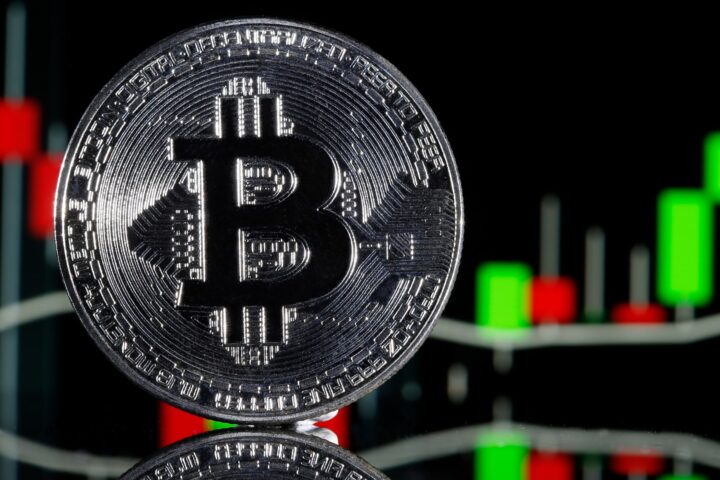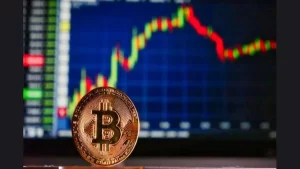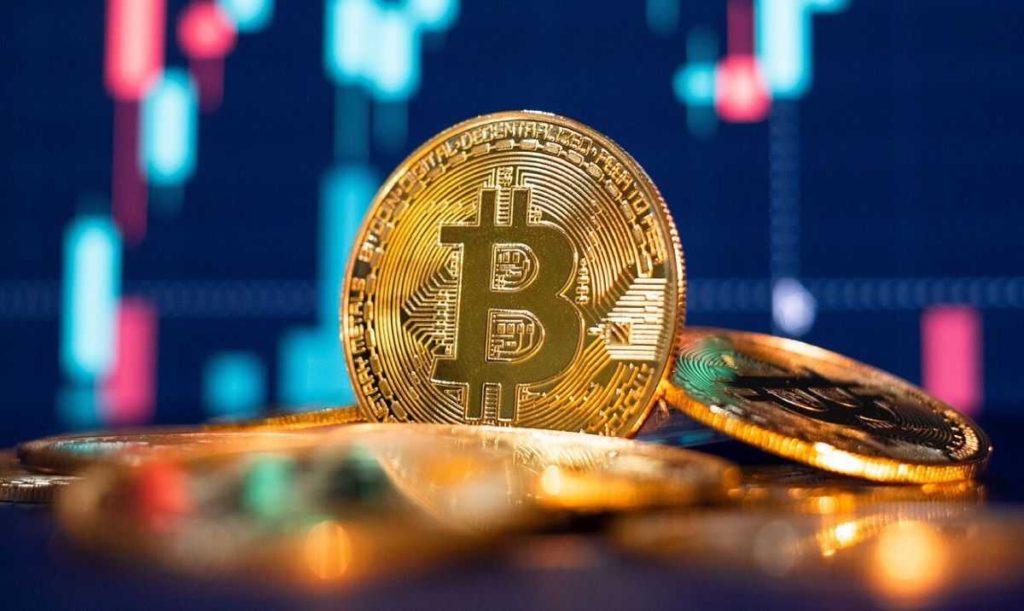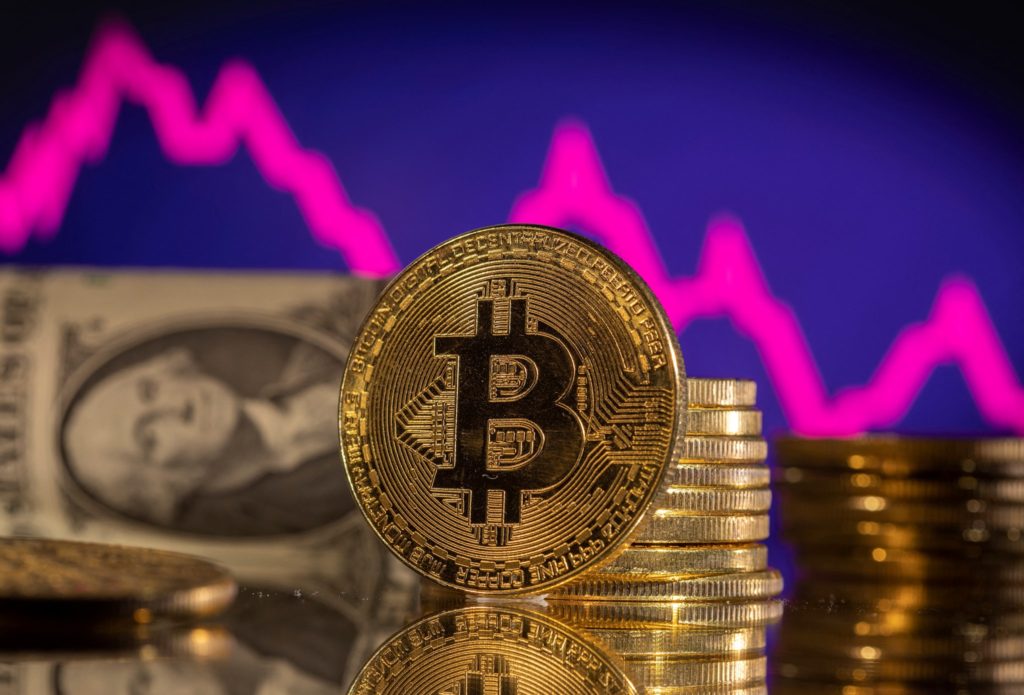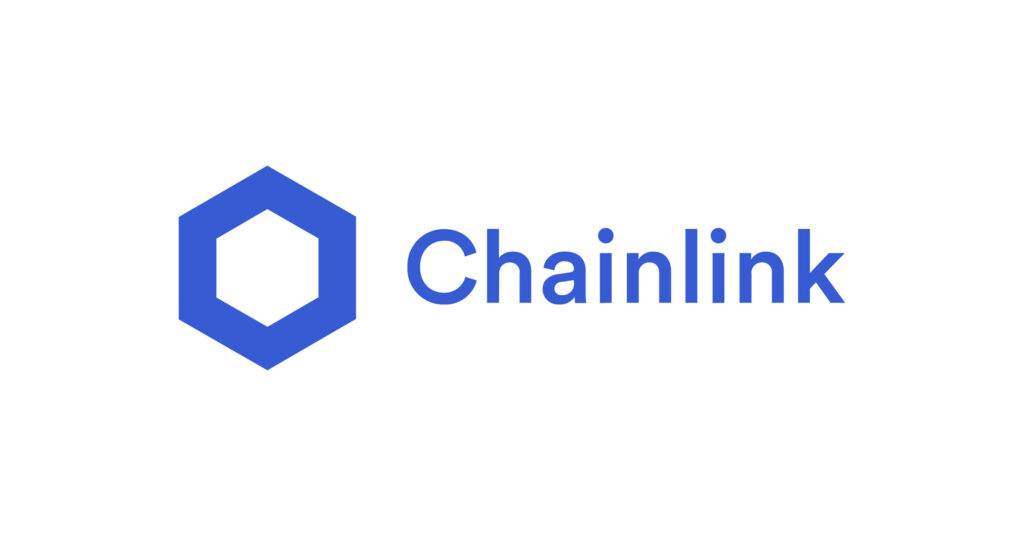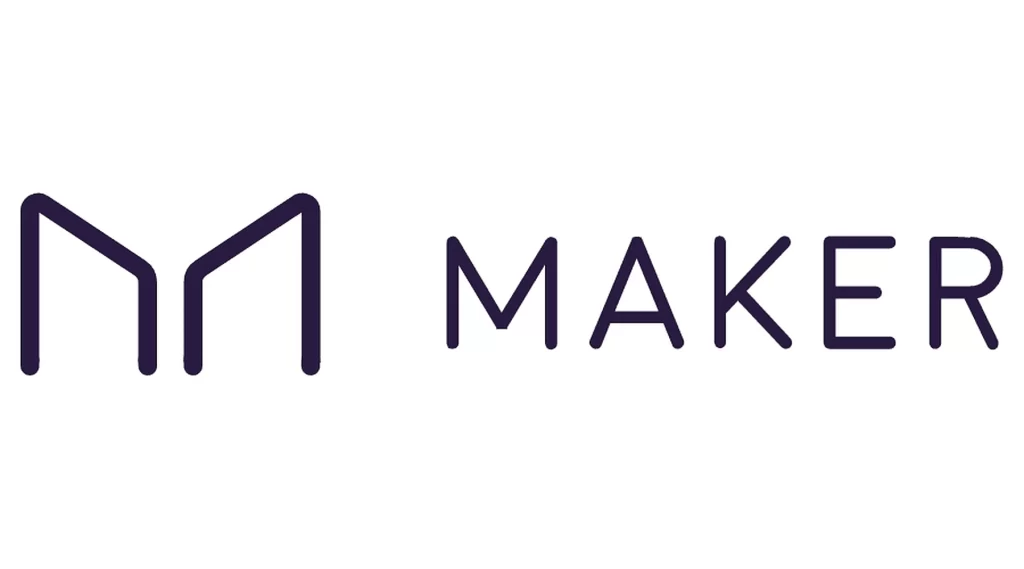In August, the decentralized finance (DeFi) ecosystem faced a series of challenges, witnessing a decline in on-chain economic activity, as revealed by an analysis conducted by the investment management firm VanEck.
During this period, exchange volume plummeted to $52.8 billion, marking a 15.5% decrease compared to July.
VanEck based its findings on the MarketVector Decentralized Finance Leaders Index (MVDFLE), which monitors the performance of the most substantial and liquid tokens on various DeFi platforms, including Uniswap, Lido DAO, Maker, Aave, THORChain, RUNE, and Curve DAO (CRV).
August proved to be a tough month for the DeFi index, which dropped by 21%, underperforming Bitcoin and Ether.
This decline was further exacerbated by the negative performance of the UNI token, which saw a staggering 33.5% decrease as investors offloaded their tokens to capture profits earned in July.
Despite the underwhelming performance of DeFi tokens in August, the ecosystem did witness some notable positive developments throughout the month.
These included the dismissal of a class-action lawsuit against Uniswap Labs and the remarkable growth of Maker and Curve’s stablecoin.
Following a significant exploit in late July, Curve Finance’s stablecoin, crvUSD, experienced substantial growth in August, reaching an all-time high of $114 million borrowed.
CrvUSD is pegged to the U.S. dollar and operates on a collateralized debt-position (CDP) model, where users deposit collateral like ETH to borrow crvUSD.
“The growth of crvUSD has allowed it to become a significant contributor of revenue for the platform, with crvUSD fees exceeding fees collected from all non-mainnet liquidity pools in 3 of the 4 last weeks,” noted the report.
READ MORE:Ethereum’s Energy Efficiency Soars: The Aftermath of The Merge
However, Curve Finance’s governance token struggled to recover from the exploit, with its price falling by 24% in August to $0.45.
The report also highlighted the concerns surrounding Michael Egorov, the founder of Curve Finance, who had around $100 million in loans backed by 47% of the circulating supply of CRV tokens.
As the CRV price dropped nearly 30% following the hack, there were fears of Egorov’s collateralized loan liquidation, raising concerns of a potential contagion effect within the DeFi ecosystem.
To reduce his debt position, Egorov sold 39.25 million CRV tokens to notable DeFi investors during the crisis.
Furthermore, VanEck pointed out that current global interest rates, particularly in the United States, continued to put pressure on stablecoins.
The aggregate market capitalization of stablecoins declined by 2% in August, reaching $119.5 billion.
This drop was attributed to elevated interest rates in traditional finance, prompting investors to shift from stablecoins to money market funds offering approximately 5% risk-free yield.
Other Stories:
Bitcoin Bucks Inflation Worries, Surges to New September Highs
DeFi Pioneer Rune Christensen Envisions Decentralized Stablecoins Dominating the Crypto Market
Crypto Markets Brace for Uncertainty as Regulatory Storm Looms
Bitcoin (BTC) concluded the week ending on September 17th with a price of approximately $26,500, showcasing a sense of stability after reaching new highs earlier in the month.
This weekend marked a period of relative calm for the leading cryptocurrency, as indicated by data from Cointelegraph Markets Pro and TradingView.
Just a couple of days prior, Bitcoin had surged to $26,880, marking its highest level for the month.
Credible Crypto, a renowned trader and analyst, examined the state of the Binance BTC/USD order book and observed a cluster of bid liquidity supporting the market.
He noted that some seller absorption was occurring at this level, suggesting a defense of this price point.
Amid this period of consolidation, another trader named Crypto Tony identified two potential scenarios. He highlighted that $26,000 was still acting as a strong support level.
Tony mentioned, “I am still looking for that dip down to $26,100 and a bounce for a long trigger.” Alternatively, he would consider going long if Bitcoin managed to reclaim the $26,600 highs.
READ MORE: DeFi Pioneer Rune Christensen Envisions Decentralized Stablecoins Dominating the Crypto Market
Examining exchange behavior, trader Skew pointed out specific short-term trends among traders, particularly spot entities selling into bounces.
This indicated a pattern of aggressive positions being hunted heading into the next week.
Beyond Bitcoin’s weekly close, participants in the crypto market were eagerly anticipating a crucial macroeconomic event from the United States Federal Reserve scheduled for September 20th.
The Federal Open Market Committee (FOMC) meeting would decide on benchmark interest rates, with the prevailing expectation in the markets being that they would remain unchanged.
CME Group’s FedWatch Tool assigned a mere 2% probability to a surprise scenario.
It’s worth noting that Bitcoin had recently displayed a decreased sensitivity to macroeconomic data, and many believed that it would continue to trade within the range of $25,000 to $27,000 in the short term, even in the face of the upcoming FOMC meeting.
As popular trader Crypto Santa concluded, “Next week’s FOMC and Interest Rate decisions should induce some volatility, but BTC will likely continue to trade within $25k – $27k in the short-term.”
Other Stories:
Ethereum’s Energy Efficiency Soars: The Aftermath of The Merge
Crypto Markets Brace for Uncertainty as Regulatory Storm Looms
Bitcoin Bucks Inflation Worries, Surges to New September Highs
Magic Eden, a prominent nonfungible token (NFT) marketplace, has made an exciting announcement that is set to revolutionize the world of digital collectibles.
They are now offering support for Solana’s compressed NFTs (cNFTs), presenting a game-changing alternative that combines cost-efficiency and scalability.
These innovative cNFTs distinguish themselves from conventional Solana NFTs by employing data compression techniques and storing the information off-chain.
This unique approach drastically reduces the fees required for minting, making it economically viable to produce NFTs in larger quantities.
Magic Eden firmly believes that cNFTs are poised to make waves across various industries such as gaming, music, events, and the metaverse.
This newfound flexibility opens doors for creators to embark on mass-produced collections, expanding their reach to wider audiences without incurring excessive costs.
Beyond catering to creators, Magic Eden also aims to democratize NFT ownership by lowering the barriers to entry.
By minimizing the production costs associated with NFTs, the marketplace becomes an accessible gateway for newcomers looking to explore the world of digital collectibles.
Users can now amass NFTs without risking substantial funds, mitigating the potential financial pitfalls that come with this burgeoning asset class.
At the core of cNFTs is Solana’s state compression, a groundbreaking feature that enables the minting of up to 1 million NFTs for a mere $110.
This stands in stark contrast to the exorbitant costs of minting NFTs on Ethereum, where fees can range from $2.9 to well over $30 per NFT.
The cost-efficiency of cNFTs is set to disrupt the market, making NFT ownership more accessible to a broader audience.
READ MORE: DeFi Pioneer Rune Christensen Envisions Decentralized Stablecoins Dominating the Crypto Market
While the advantages of off-chain NFT hosting are evident, it is essential to acknowledge the potential challenges that may arise.
A notable incident in 2022 involved NFTs minted on the crypto exchange FTX, which displayed blank images as the exchange faced bankruptcy.
An engineer highlighted that these NFTs were hosted using Web2 technology, underscoring the importance of using blockchain-based solutions for NFT hosting to ensure the security and integrity of digital collectibles.
In conclusion, Magic Eden’s support for Solana’s cNFTs marks a significant leap forward in the NFT space.
This innovation promises to democratize NFT ownership, reduce costs, and foster the growth of various industries, while also reminding us of the critical importance of employing blockchain technology for secure NFT hosting.
Other Stories:
Ethereum’s Energy Efficiency Soars: The Aftermath of The Merge
Bitcoin Bucks Inflation Worries, Surges to New September Highs
Crypto Markets Brace for Uncertainty as Regulatory Storm Looms
BitQuant, a renowned social media commentator in the cryptocurrency sphere, has set a bold price prediction for Bitcoin.
While many anticipate Bitcoin’s price to surge as it approaches its next block subsidy halving, BitQuant’s forecast suggests that it will reach new all-time highs even before this event.
In a recent post on X, formerly known as Twitter, BitQuant, operating under the pseudonym of a “central banker and Bitcoiner,” disclosed a pre-halving target exceeding $69,000.
He emphasized that Bitcoin would not reach its peak before the halving, but rather, it would attain a new record high.
Currently, Bitcoin has a little over six months left before the halving, an event that reduces miner rewards by 50% every four years.
Analysts contend that this reduction in supply emissions tends to catalyze a surge in Bitcoin’s price, acting as a launching pad for new all-time highs.
BitQuant, however, remains even more bullish in his outlook.
READ MORE: Arbitrum and Optimism Networks are on BetFury
He believes that not only will Bitcoin surpass its existing all-time high, established in 2021, before April, but it will eventually reach an impressive $250,000 per coin after the commencement of the next halving cycle in 2024.
Contrary to BitQuant’s optimism, the cryptocurrency market is marked by a stark division of opinions regarding Bitcoin’s price trajectory leading up to and following the halving.
While some share BitQuant’s optimism about higher prices by April, many adopt a more conservative stance.
Jesse Myers, a Bitcoin investor and author, dismisses the idea of BTC/USD hitting six figures before the halving.
Meanwhile, Filbfilb, co-founder of trading suite DecenTrader, projects a pre-halving BTC price ceiling of $46,000, barring any unforeseen black swan events.
As of September 15, Bitcoin was trading at approximately $26,400, marking a 1.3% increase in September so far, according to data from monitoring resource CoinGlass.
While the future remains uncertain, BitQuant’s prediction has certainly added to the ongoing debate about Bitcoin’s price trajectory, leaving the cryptocurrency community eager to see how events unfold in the coming months.
Other Stories:
US and Vietnam Forge Multi-Billion Dollar AI and Tech Partnerships
2023 Crypto Venture Capital Funding Plummets As Industry Faces Uncertain Times
Binance.US Challenges SEC’s ‘Unreasonable’ Demands in Legal Showdown
Australia and New Zealand Banking Group (ANZ) is making significant strides toward the launch of its bank-issued stablecoin, A$DC.
The bank has achieved a crucial milestone by successfully conducting a test transaction on Chainlink’s Cross-Chain Interoperability Protocol (CCIP), marking a pivotal moment for the institution.
Nigel Dobson, the lead for ANZ’s banking services portfolio, emphasized the significance of this achievement, stating that it represents a substantial step forward for the bank.
The test transaction conducted in collaboration with Chainlink CCIP simulated the purchase of a tokenized asset, utilizing A$DC and an ANZ-issued New Zealand dollar-denominated stablecoin.
Dobson disclosed that ANZ has been actively exploring various blockchain networks as part of its “test-and-learn” approach.
This experimentation is aimed at identifying the most effective applications for ANZ’s Australian dollar stablecoin within decentralized networks.
ANZ, one of the world’s largest global banks boasting over $1 trillion in total assets under management, is showcasing the potential of CCIP for secure cross-chain stablecoin transactions.
This demonstrates the growing prominence of Chainlink and CCIP as standard solutions for facilitating interbank transactions.
READ MORE: Prominent Executives Predict Bitcoin Could Surpass $100,000 in 2024
Dobson underscored ANZ’s conviction in the value of tokenizing real-world assets like the Australian dollar, a development poised to reshape the banking industry.
He remarked, “Tokenized assets are already changing the way banking works, and the technology has the potential to do more — if the right pieces can come together.”
Notably, ANZ achieved a significant milestone in March 2022 when it minted the first A$DC stablecoin, becoming the inaugural Australian bank to do so.
National Australia Bank (NAB) followed suit a year later by introducing its AUDN stablecoin on the Ethereum blockchain.
However, it is worth mentioning that NAB, along with several of its counterparts, including Commonwealth Bank of Australia, Westpac, and Bendigo Bank, has recently imposed restrictions and, in some cases, complete bans on bank transfers to certain “high-risk” cryptocurrency exchanges.
The primary rationale cited by these banks is the need to safeguard customers against potential cryptocurrency scams.
This regulatory stance highlights the ongoing tension between traditional banking institutions and the burgeoning cryptocurrency ecosystem.
Other Stories:
Binance.US Challenges SEC’s ‘Unreasonable’ Demands in Legal Showdown
2023 Crypto Venture Capital Funding Plummets As Industry Faces Uncertain Times
Former PayPal President Predicts Bitcoin Lightning Network Revolutionizing Global Payments
John Deaton, a prominent attorney representing numerous XRP token holders in the Ripple-Securities Exchange Commission (SEC) lawsuit, has taken a significant step by officially submitting his notice of appearance as an Amicus Curiae in the LBRY lawsuit.
This noteworthy development transpired on September 14, 2023, when Deaton formally lodged his Notice of Appearance on behalf of Amicus Curiae Naomi Brockwell, who is widely recognized as the founder of Crypto Law.
Crypto Law is a dedicated platform offering invaluable insights and updates on legal and regulatory developments pertaining to cryptocurrencies in the United States, and it operates in collaboration with Deaton.
John Deaton has earned a reputation for his unwavering advocacy for the rights of cryptocurrency investors and his active participation in legal proceedings and discussions related to cryptocurrency regulations and legal actions. His involvement in the LBRY lawsuit marks another significant stride in his commitment to the cryptocurrency community.
The LBRY lawsuit originated in March 2021 when the United States SEC initiated legal action against LBRY.
The SEC alleged that LBRY had unlawfully sold LBC tokens without complying with the agency’s registration requirements, as mandated by law.
READ MORE: Prominent Executives Predict Bitcoin Could Surpass $100,000 in 2024
On September 7, 2023, LBRY filed a notice of appeal with the United States Court of Appeals for the First Circuit, seeking to challenge the final judgment delivered on July 11.
This judgment had ordered LBRY to pay a civil penalty and imposed a prohibition on its participation in unregistered offerings of crypto asset securities in the future.
In July 2023, the United States District Court for the District of New Hampshire issued its final judgment in the US SEC vs. LBRY lawsuit, determining LBRY’s liability for violating Section 5 of the Securities Act of 1933.
The outcome of this case was closely watched for its potential implications for the ongoing XRP lawsuit.
However, on July 14, 2023, U.S. District Judge Analisa Torres handed down a summary judgment in favor of Ripple.
The judgment established that the sale of XRP tokens to retail buyers did not qualify as securities, providing a significant legal victory for Ripple and its supporters.
John Deaton’s involvement as Amicus Curiae in the LBRY lawsuit underscores the interconnectedness of legal actions within the cryptocurrency space and the growing influence of individuals dedicated to safeguarding the rights and interests of cryptocurrency investors.
Other Stories:
Binance.US Challenges SEC’s ‘Unreasonable’ Demands in Legal Showdown
2023 Crypto Venture Capital Funding Plummets As Industry Faces Uncertain Times
Former PayPal President Predicts Bitcoin Lightning Network Revolutionizing Global Payments
Decentralized stablecoins could potentially dominate the stablecoin market in the future, according to Rune Christensen, the co-founder of MakerDAO, a pioneering decentralized finance (DeFi) platform.
In an interview with Cointelegraph’s Andrew Fenton at Token 2049 in Singapore, Christensen shared his insights on the role of decentralized stablecoins, like Dai (DAI), within the broader cryptocurrency ecosystem.
Christensen referenced a presentation by Nic Carter, a partner at Castle Island Ventures, during the conference.
Carter had suggested that interest-bearing stablecoins might capture 30% of the market within two years.
While Christensen agreed with this prediction, he emphasized that the outcome might hinge on macroeconomic conditions.
If high inflation and high interest rates persist, the dominance of stablecoins could increase.
When asked whether decentralized stablecoins could compete with their centralized counterparts, Christensen expressed confidence in their potential.
He stated that if the cryptocurrency space fulfills its potential, decentralized stablecoins could come to dominate the entire market, while centralized stablecoins would serve as the bridges to the legacy financial system.
Christensen highlighted the unique advantage of decentralized stablecoins, particularly those like Maker, which rely on real-world data.
He noted that these coins have the capacity to gamify savings, making them more engaging for users.
In mid-2022, Christensen proposed MakerDAO’s “Endgame Plan.”
READ MORE: Prominent Executives Predict Bitcoin Could Surpass $100,000 in 2024
The plan outlines the transition of DAI from a stablecoin pegged to the dollar to a free-floating asset, initially collateralized by real-world assets (RWA).
Over a three-year period, DAI would gradually shift from its dollar peg, with a focus on accumulating Ether (ETH) as decentralized collateral.
Christensen acknowledged that MakerDAO had established a strong and stable foundation but expressed concerns about the proliferation of fraudulent and illegitimate projects in the crypto space.
To address this, he envisioned making the protocol more appealing and enjoyable for younger users by incorporating gamification elements.
He believed that designing interfaces akin to games would attract users and enhance the protocol’s overall appeal.
In summary, Rune Christensen, co-founder of MakerDAO, sees a promising future for decentralized stablecoins like Dai.
Their potential dominance in the stablecoin market depends on various factors, including macroeconomic conditions and the ability to gamify savings, which could make them more attractive to users.
MakerDAO’s “Endgame Plan” represents a strategic shift toward greater decentralization and adaptability in the evolving cryptocurrency landscape.
Other Stories:
Binance.US Challenges SEC’s ‘Unreasonable’ Demands in Legal Showdown
2023 Crypto Venture Capital Funding Plummets As Industry Faces Uncertain Times
Former PayPal President Predicts Bitcoin Lightning Network Revolutionizing Global Payments
Popular messaging app Telegram has introduced a long-awaited crypto wallet, marking a significant step towards realizing its vision of building a Web3 ecosystem.
The announcement came during the Token2049 event in Singapore, generating considerable excitement among the platform’s 800 million global users.
This crypto wallet operates on The Open Network (TON) blockchain, providing Telegram users with a seamless and secure way to manage their digital assets.
The integration of the TON wallet into Telegram had an immediate impact on the crypto market, causing Toncoin’s value to surge by approximately 7% upon the unveiling.
The TON Foundation has unveiled a compelling incentive for projects built on the TON blockchain.
These projects will receive preferential access to Telegram’s advertising platform, Telegram Ads.
While the wallet feature is currently accessible in the app’s settings for existing users, a worldwide rollout is scheduled for November this year, with the notable exception of the United States and a few other countries.
READ MORE:CFTC Commissioner Calls for Tech-Driven Investor Protection Reforms
Telegram’s journey towards integrating a TON-based crypto wallet began as far back as 2019. However, the project faced substantial obstacles when the U.S. Securities and Exchange Commission (SEC) filed a lawsuit against Telegram in 2020.
The SEC alleged that Telegram’s $1.7 billion initial coin offering (ICO) was an unregistered security.
In response, Telegram reached a settlement with the SEC, agreeing to pay an $18.5 million fine and refund any unspent funds to investors.
Now, with their renewed collaboration, the TON Foundation and Telegram aim to forge a strong partnership and develop the Web3 infrastructure within the messaging platform.
Their vision is clear: to eliminate onboarding barriers and establish a user-friendly gateway to cryptocurrency for all Telegram users.
In summary, Telegram’s crypto wallet, built on the TON blockchain, is set to reshape the landscape of digital asset management within the messaging app.
With a global rollout on the horizon and a commitment to Web3 development, Telegram is poised to become a prominent player in the world of cryptocurrency.
Other Stories:
Federal Reserve Vice Chairman Highlights CBDC Research and Stablecoin Oversight in Fintech Speech
SEC Pursues Appeal in Ripple Labs Lawsuit Over XRP’s Security Classification
Coinbase, a prominent cryptocurrency exchange, has officially embraced the Lightning Network (LN), a layer-2 payment protocol.
This integration is in response to user demands for swifter and more cost-effective Bitcoin transactions.
The Lightning Network was conceived as a solution to Bitcoin’s scalability issues and to compete with newer cryptocurrencies that promised quicker and cheaper transactions.
For a considerable period, major crypto exchanges like Coinbase and Binance had hesitated to adopt this layer-2 solution.
Many community members argued that integrating the Lightning Network would offer fewer financial incentives for exchanges.
Contrary to the prevailing sentiment, Brian Armstrong, the CEO of Coinbase, confirmed the exchange’s decision to integrate the Lightning Network.
In his statement, he emphasized the importance of Bitcoin in the crypto world and expressed excitement about enabling faster and cheaper Bitcoin transactions.
Armstrong also acknowledged that the integration process would take some time and requested patience from users.
READ MORE: Federal Reserve Vice Chairman Highlights CBDC Research and Stablecoin Oversight in Fintech Speech
This decision followed a month of exploration by Viktor Bunin, a protocol specialist at Coinbase, into the feasibility of integrating the Lightning Network.
During this period, influential figures in the crypto industry, such as Michael Saylor of MicroStrategy and Jack Dorsey of Square, publicly questioned Armstrong’s stance on the Lightning Network.
The crypto community welcomed Coinbase’s announcement, as the integration of the Lightning Network will make affordable and efficient Bitcoin microtransactions accessible to a broader audience.
In a related development, on July 17th, Binance, another major cryptocurrency exchange, revealed that it had successfully integrated the Lightning Network for Bitcoin withdrawals and deposits.
Binance users now have the option to choose “LIGHTNING” when withdrawing or depositing Bitcoin.
This additional option enhances the flexibility of users and contributes to the growing adoption of layer-2 solutions in the cryptocurrency ecosystem.
Other available options for withdrawals and deposits on Binance include BNB Smart Chain (BEP-20), Bitcoin, BNB Beacon Chain (BEP2), BTC (SegWit), and Ethereum ERC-20.
Overall, these integrations mark a significant step forward in addressing Bitcoin’s scalability issues and making cryptocurrency transactions more efficient and cost-effective for users on these platforms.
Other Stories:
Bitcoin faced a notable resurgence, surging by 5% after a critical test of the $25,000 support level on September 11th.
Nonetheless, this upward swing should not be hailed as an unequivocal triumph for bullish investors.
To provide context for this recent price action, it’s crucial to acknowledge that Bitcoin has weathered a harsh 15% decline since July, a performance contrasted by the stability observed in the S&P 500 index and gold during the same period.
This underperformance exposes Bitcoin’s struggle to gain momentum, despite substantial catalysts like MicroStrategy’s intent to acquire an additional $750 million worth of BTC and the persistent requests for Bitcoin spot exchange-traded funds (ETFs) from trillion-dollar asset management firms.
Yet, in the realm of Bitcoin derivatives, the bullish camp appears confident, viewing the $25,000 level as a significant bottom and a gateway to further price hikes.
Some proponents argue that Bitcoin’s primary drivers for 2024 remain in force, particularly the anticipation of a spot ETF and the reduction in new supply after the April 2024 halving.
Furthermore, immediate risks in the cryptocurrency markets have diminished, partly due to the United States Securities and Exchange Commission experiencing partial losses in cases involving Grayscale, Ripple, and decentralized exchange Uniswap.
Conversely, bears have their own advantages, including ongoing legal disputes involving prominent exchanges like Binance and Coinbase.
Additionally, Digital Currency Group’s precarious financial position after a subsidiary’s January 2023 bankruptcy declaration, bearing debts exceeding $3.5 billion, could potentially lead to the sale of Grayscale-managed funds, including the Grayscale Bitcoin Trust.
A closer examination of derivatives metrics sheds light on the stance of professional traders in the current market conditions.
Bitcoin monthly futures typically maintain a slight premium over spot markets, signaling that sellers demand more money to postpone settlement.
READ MORE: CFTC Commissioner Calls for Tech-Driven Investor Protection Reforms
Consequently, BTC futures contracts usually exhibit a 5 to 10% annualized premium, known as contango, a phenomenon not unique to crypto markets.
While the demand for leveraged BTC long and short positions through futures contracts had minimal impact on the drop below $25,000 on September 11th, the BTC futures premium remains below the 5% neutral threshold, signaling a lack of enthusiasm for leveraged long positions.
To delve further into market sentiment, observing the options markets, particularly the 25% delta skew, provides insight into investor optimism.
Previously, a 9% premium on protective put options implied an anticipation of correction.
However, this metric has now stabilized at zero, indicating balanced pricing between call and put options, suggesting equal odds for both bullish and bearish price movements.
In light of macroeconomic uncertainty, including the impending release of the Consumer Price Index report on September 13th and retail sales data on September 14th, crypto traders are likely to proceed cautiously, aiming for a “return to the mean” within the trading range of $25,500 to $26,200 observed over the past weeks.
Ultimately, both bullish and bearish forces possess influential triggers that could sway Bitcoin’s price.
However, the timing of events such as court decisions and ETF rulings remains elusive.
This dual uncertainty likely explains the resilience of derivatives metrics, with both sides exercising caution to mitigate excessive exposure.
Other Stories:
SEC Pursues Appeal in Ripple Labs Lawsuit Over XRP’s Security Classification
Bitcoin Rebounds from Three-Month Lows Amid Traders’ Doubts
Federal Reserve Vice Chairman Highlights CBDC Research and Stablecoin Oversight in Fintech Speech

